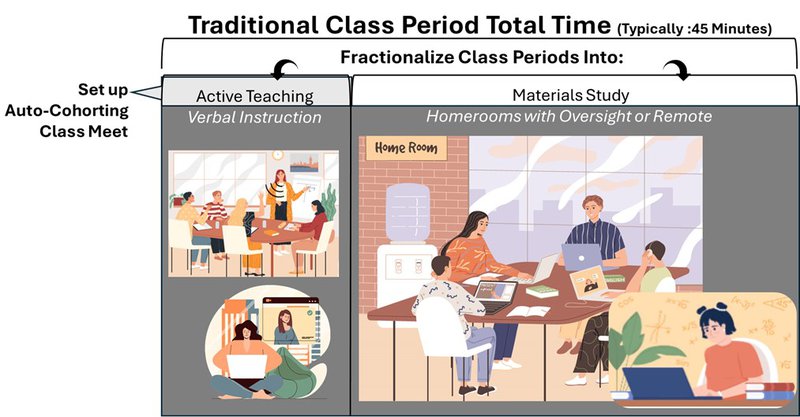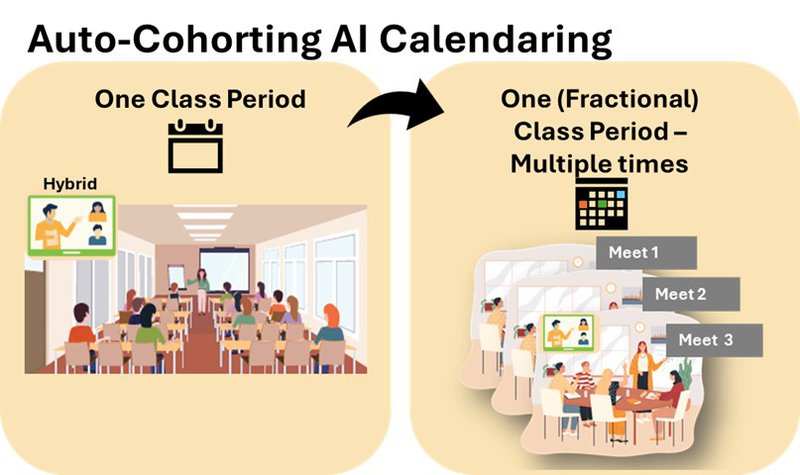We need you to contact us if you agree that a solution mentioned in this article should be explored.
When we say, “breaking the by-age whole groupings,” you probably think of self-paced online learning that is devoid of live teaching. Nope.
You’re thinking school runs by putting students by age into grades. You’re thinking that a class schedule is firmly calendared, and one lesson follows another like train cars day-by-day and week-by-week and year-by-year. If a student misses a few, they could fall way behind because learning is scaffolded to build on earlier material.
Most teachers are teaching widely disparate grade levels right now in classrooms all across America. There used to be a thing called “tracking” to sub-group by ability level but even that is mostly gone now. There were gifted and talented programs, etc. Now with so few teachers and a movement to be “inclusive” schools are putting every ability level together by age and teachers must try to personalize which really means they must teach practically the entire curriculum map, all grades, at once.
It’s wildly off now, with classes having three to six or more grades of difference in a quarter or more of the class, every class. There are commonly 8th grade teachers with 2nd grade reading levels in their classroom – and worse, students who can’t read at all.
AI can break up whole groups into small groups and it can manage class togetherness on-demand. Just like Uber does for drivers and riders.
AI can take one class meeting for a lesson on the curriculum roadmap and break it into any multiple of itself so that slow or fast students could trigger it on-demand as a smaller cohort of fellow-traveler peer students of any age arrived at the point of needing that class?
A class meeting is not calendared but waiting. It waits to be called on like Uber when you need a ride. Students click “finish” in systems, complete a quiz, or “accept” in email and that enrolls them. Teachers have tracking dashboards.
The first thing to make that happen would be to fractionalize the live instruction moment away from the student study moments. Teachers do that already. Almost no one lectures with words coming out of their human mouths the entire 45-minute class period.


This AI would shake up the old master schedule for sure. Teachers would be delivering shorter-version class meetings from various parts of courses they were assigned on any one day.
They would save 50% of their time or more by not being with whole groups but instead holding multiple shorter meetings and then roaming around to homerooms checking up on all their students and helping individuals trailing behind.
It doesn’t stop there. Courses could be open for enrollment all the time so students could zoom ahead and get to the next grade as fast as they want. Their individual schedules could be adjusted to take away all their time from their favorite subject where they are way ahead and give them a concentrated year in other subjects they are behind in. It would become common to socialize in homerooms. Courses for 9th graders in 2nd grade reading would enroll ages within a three- or four-year band to cohort together, and probably be adjusted for materials and instruction. Courses for 5th graders in 8th grade math would do the same.
Wow, the whole curriculum map would be untethered from firm calendaring, just floating there with rough brackets against the old firm calendars. It would be course-based, but each class meeting within a course would itself accrue students and then calculate common time to set, then accrue the next set, and so forth, forever, as long as the course was “open”, and teachers could add new students at any time.
When schools say they have pace-based learning they are usually thinking within grade bands. With absenteeism, a vast teacher shortage, and wide disparity, it’s time to think differently about time and how learning is constructed.
Every objection teachers or administrators have put to this sort of auto-cohorting AI calendaring reorganization of schooling has surprisingly simple answers.
I encourage you to find out more.











